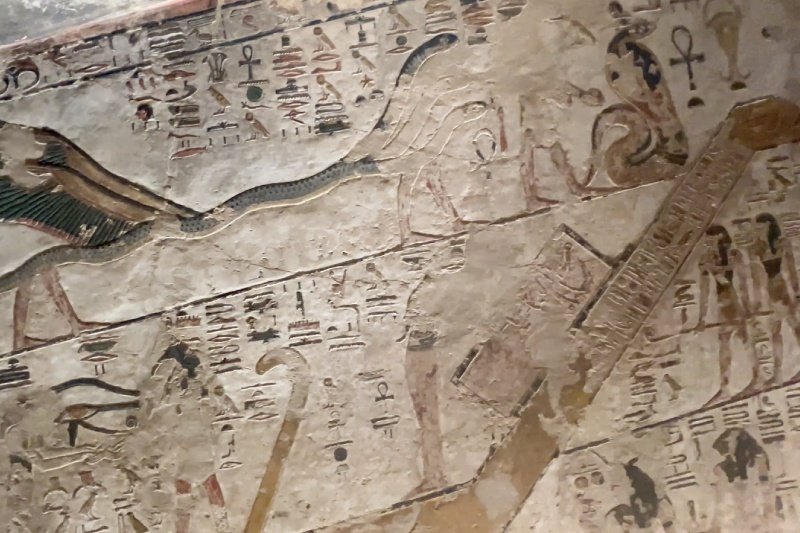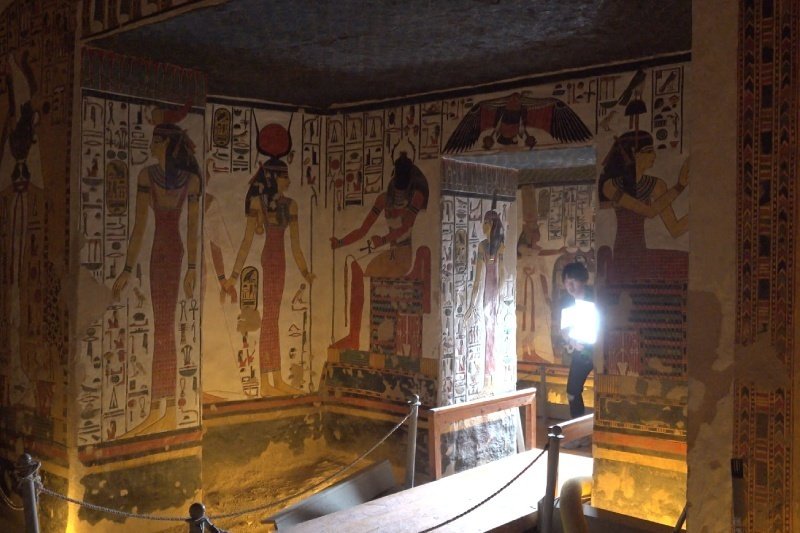
Tomb of Seti I 3D Scanning Project - WORLD SCAN PROJECT’s Challenge
Seti I ruled Egypt as the second pharaoh of the 19th Dynasty. His royal tomb in the Valley of the Kings is one of the longest and is adorned with grand reliefs and murals inside.
In this article, we will introduce the investigation of our World Scan Project (W.S.P) and the Tomb of Seti I.
Seti I – Remarkable Pharaoh Who Gave Egypt New Glory
Seti I is a famous pharaoh known for restoring social order after the religious reforms at the end of the 18th Dynasty and for his aggressive military expeditions. He achieved many military victories and expanded the territory, establishing a stable reign that laid the foundation for the prosperity of the 19th Dynasty. Reliefs and murals commemorating his achievements remain in various places.
His royal tomb, built in the Valley of the Kings, is remarkable for its impressive depth of 100 meters and length of over 120 meters. Its decorations are of extraordinary beauty and eloquent testimony to the greatness of Seti I.



Journey to the Afterlife
The murals in the royal tomb are narrative in style, and at the entrance, there is a scene depicting Seti I greeting the sun god Ra-Horakhty as he departs for the underworld. In ancient Egypt, the sun, called "Ra," was worshipped as an immortal being because it sets in the west in the evening and rises in the east in the morning, dying and being reborn each day. Similarly, like the sun reborn at dawn, the pharaoh was believed to be resurrected.

After witnessing Seti I's departure into the afterlife, one reaches the second passage decorated with the Amduat. This funerary text, which means "That Which Is In the Afterworld" in ancient Egyptian, describes the journey of the sun god who, having set in the west, travels through the underworld, overcoming various gods, enemies, and obstacles, to rise again from the east, divided into a twelve-hour journey. Here, you can explore the ancient Egyptians' view of death not as the end of life, but as a transition to eternal life.

The second passage shows a weakened sun god uniting with Osiris, the god of resurrection, and heading east. However, many aspects of this worldview and its motifs remain unexplained.

A hypostyle hall decorated with the Book of Gates
Further inside, a hypostyle hall with four columns is constructed, lavishly decorated throughout with the "Book of Gates."
The Book of Gates is a funerary text filled with spells and prayers. In ancient Egypt, it was believed that the deceased had to pass through twelve gates in the underworld on their journey from this world to the next, but each gate was guarded by fearsome creatures and challenges. The Book of Gates provided the necessary spells and prayers to safely overcome these trials and pass through the twelve gates.


Overcoming difficulties and being resurrected after death, the murals narrate stories of the underworld and a strong desire for eternal life, continually captivating the hearts of those who visit.
The burial chamber of the Tomb of Seti I
In the burial chamber, the murals depict the sun god's journey into the underworld and his rebirth in a new form. Amidst the majestic scenery, the mural paintings of stars and constellations on the vaulted ceiling are particularly striking.



The celestial map, centered on the North Star—a symbol that never sets—vividly illustrates gods, major constellations, and stars. The intricacy of these images showcases the ancient Egyptians' advanced observational skills, as well as their deep understanding and reverence for the cosmos.
Making the world, the future, and curiosity closer
The discovery of the tomb of Seti I goes beyond mere historical significance; it embodies the cosmology of the ancient Egyptians, their views on life and death, and the pinnacle of their art and architecture. To preserve these priceless insights for future generations, we at the World Scan Project undertook 3D scanning.

Through high-precision digitization, we can realistically recreate every detail of the decoration, allowing researchers and the general public worldwide to explore the interior as if they were there.
We aim to carry the torch of history from the ancient to the modern and into the future through digital technology. That is our dream and our mission. If you are interested in this initiative, please follow and support the activities of the World Scan Project.

Please also check out this video about the Tomb of Seti I.
この記事が気に入ったらサポートをしてみませんか?
